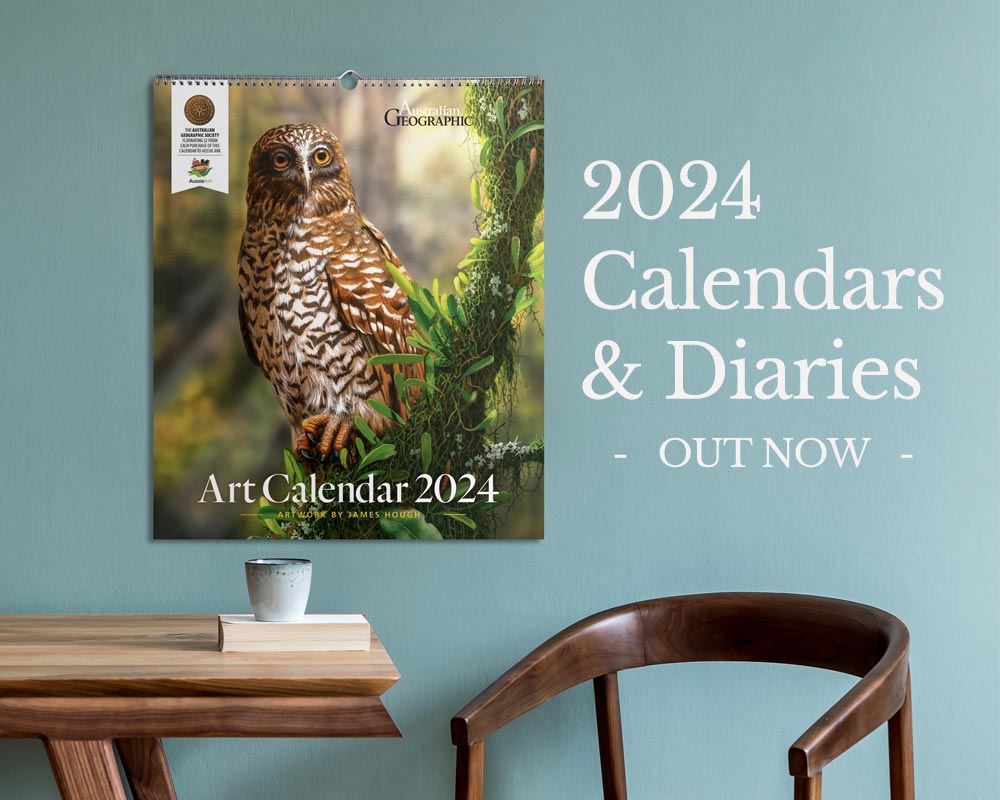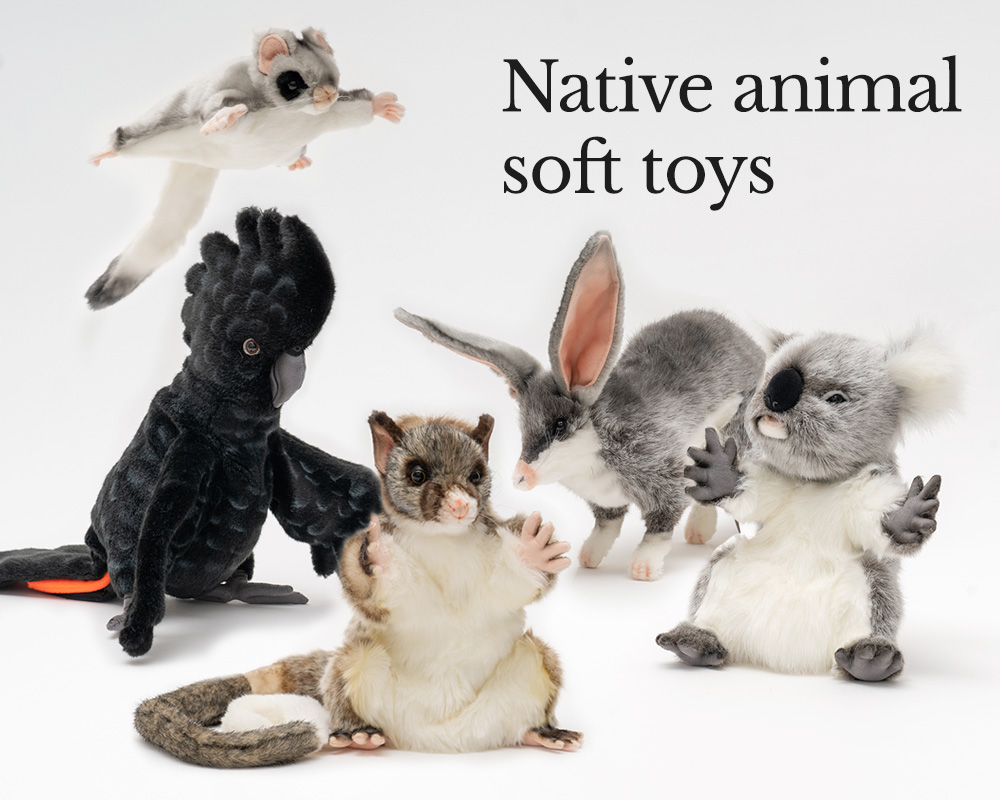GALLERY: 2017 AG Nature Photographer of the Year winners

Windblown Egret
Little egret, Egretta garzetta
A little egret (Egretta garzetta) in breeding plumage was feeding in a shallow section of Herdsman Lake on a windy day when he turned and the breeze ruffled his feathers.
Herdsman Lake, Perth, Western Australia
Nikon D7200, Sigma 150-600 mm Sport at 440 mm, 1/1000, f/6.3, ISO 100, monopod
Photo Credit: Jennie Stock, Western Australia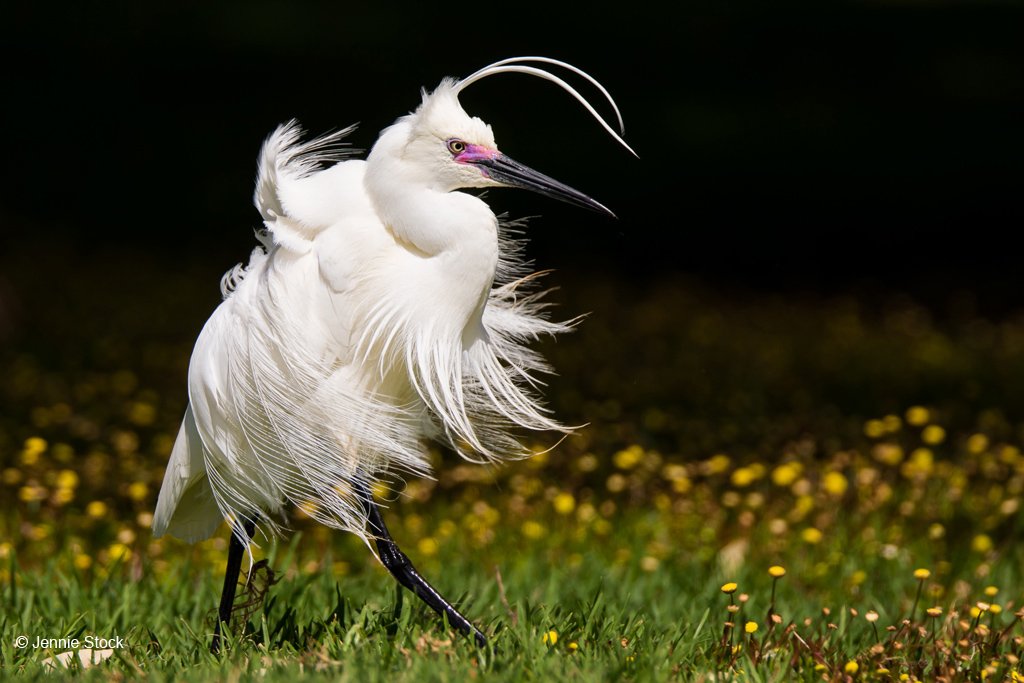
Shortfin Scorpion Fish
Shortfin scorpionfish, Scorpaena brachyptera
I love these strange bottom-dwelling creatures. They are easy to find, often overlooked and have the most amazing eyes. Scorpionfish are highly dangerous ambush predators, with venomous spines along their backs. I used a directional light to highlight only the face of the fish and created the black surround by under exposing the surrounding area.
Lembeh, Manado, Indonesia
Nikon D3S, Nikon 105 mm, 1/160, f/18, ISO 400, Retra light shaping device, Ikelite 161 strobe, Seacam housing
Photo Credit: Tracey Jennings, Singapore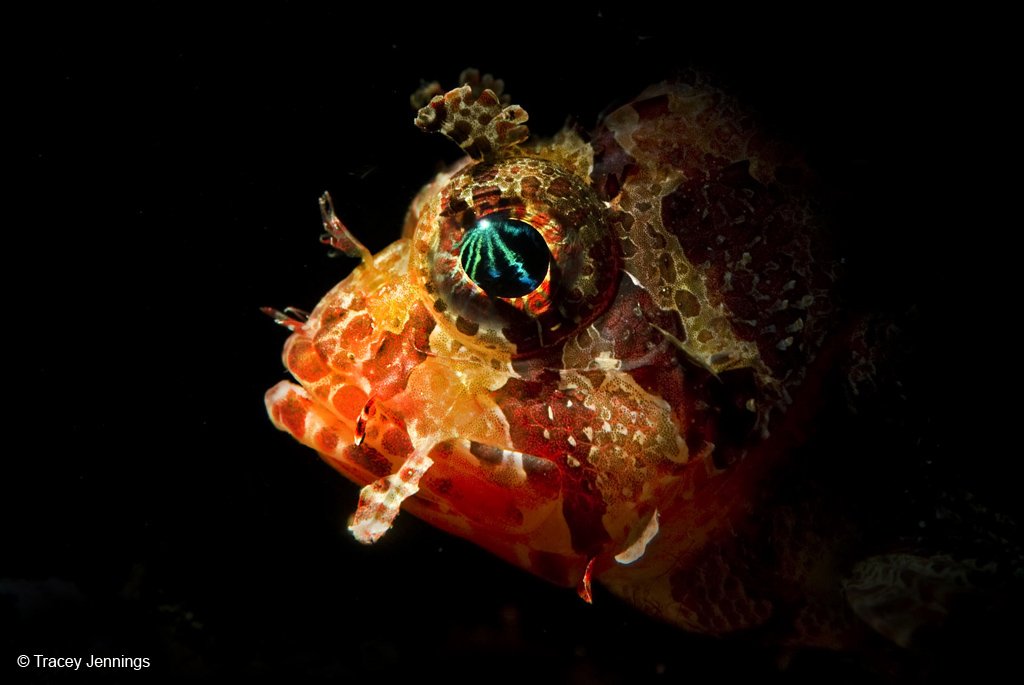
Devouring a home
Giant jellyfish, Tiburonia granrojo; green turtles, Chelonia mydas
Giant jellyfish make a very inviting meal to a couple of green turtles (Chelonia mydas). One of their main food sources, the green turtles devour the soft tentacles and underside of the jellyfish while slowly reducing the home of some small fish to a lifeless shell.
Byron Bay, New South Wales
Canon 5D Mk III, 16-35 mm, 1/200, f/11, ISO 250
Photo Credit: Scott Portelli, New South Wales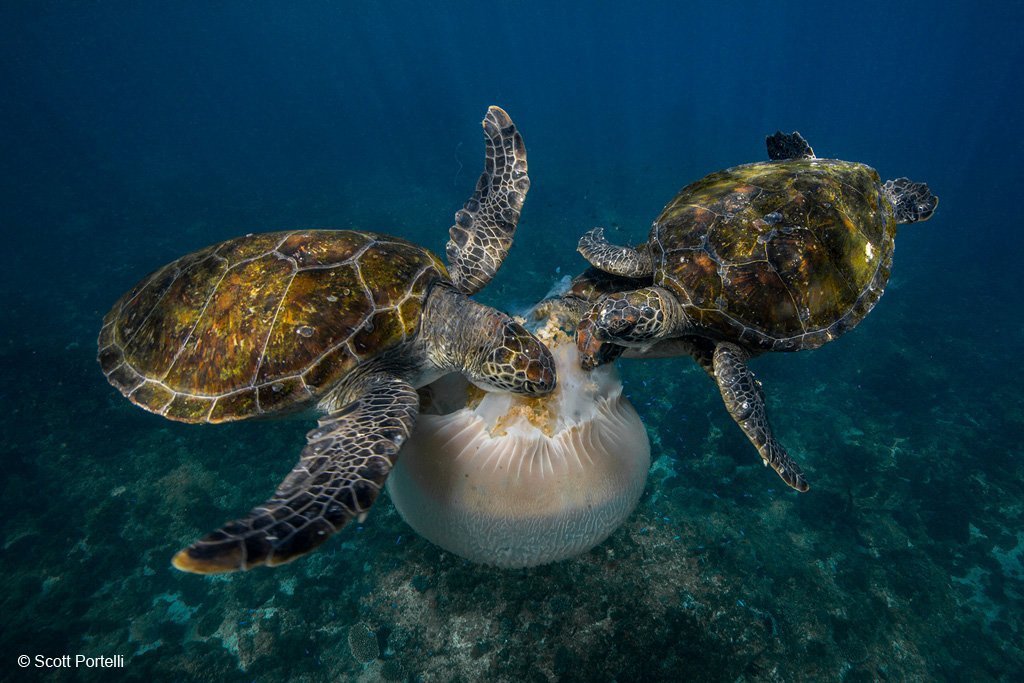
The Rehearsal
Southern royal albatross, Diomedea epomophora
A southern royal albatross (Diomedea epomophora) with its wings unfurled, practices ‘sky calling’, while two others clap bills. This behaviour is part of a complex courtship rehearsal performed by groups of up to a dozen young pre-breeding birds who advertise for partners using a complex repertoire of signals known as gaming.
Campbell Island, New Zealand
Nikon D750, Nikon 24-70 mm f2.8, 1/3200, f/8, ISO 500, handheld
Photo Credit: Jason Hosking, New Zealand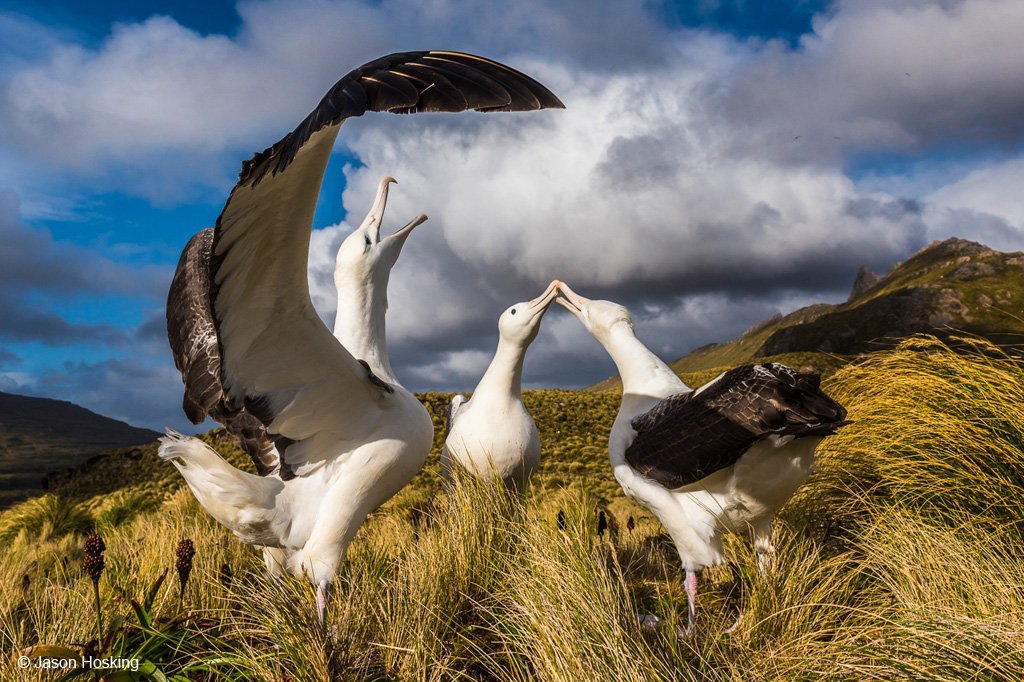
Happy Wanderer
Short-beaked echidna, Tachyglossus aculeatus
As I waited for sunset at Hanson’s Peak in the Cradle Mountain/Lake St Clair National Park in Tasmania, an echidna appeared. He was happy wandering the mountains in search for dinner. I was happy to photograph him doing it. I’ve never seen an echidna this high in the mountains before or since.
Cradle Mountain/Lake St Clair National Park, Tasmania
Nikon D800, Nikkor 14-24 f/2.8g, 1/100, f/16, ISO 400, handheld
Photo Credit: Jason Stephens, Tasmania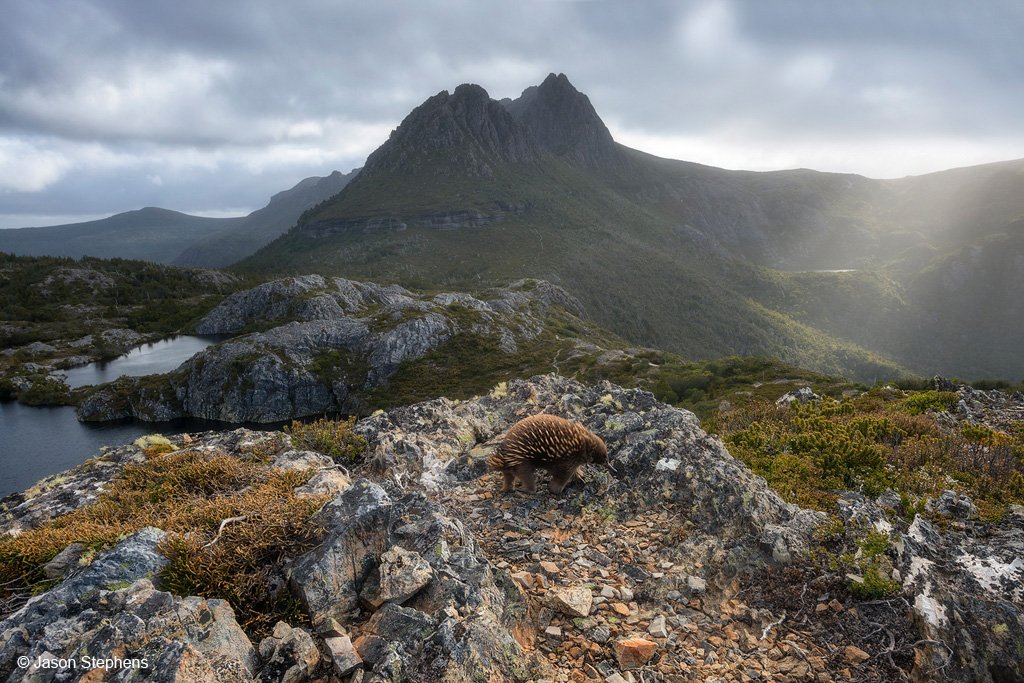
Arborek Jetty
Unidentified species
I spent about six hours under the jetty at Arborek in awe and wonder of the schooling fish, but this scene was only visible for a minute or so. As a boat pushed off from the jetty a beam of light highlighted the small patch of reef.
Arborek, Raja Ampat, Indonesia
Nikon D3S, Nikon 16 mm fisheye, 1/250, f/9, ISO 320, Ikelite 161 strobe, Seacam housing
Photo Credit: Tracey Jennings, Singapore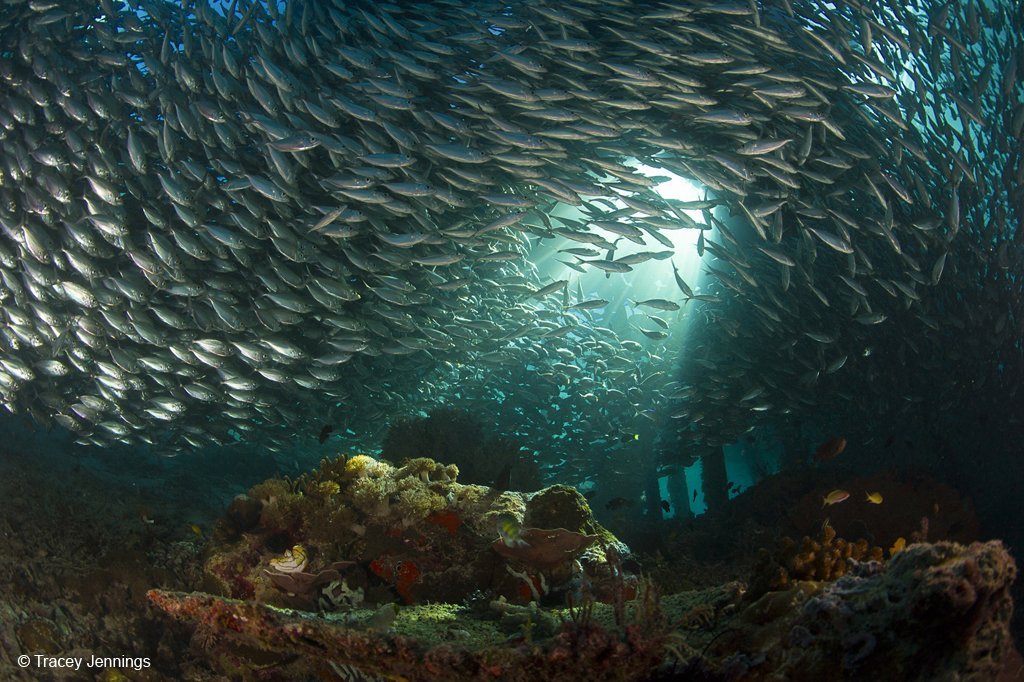
Final Stand
Tasmania once had vast swathes of giant kelp forests. A rapid collapse has occurred due to the prolonged warming influence of the east Australia current. The very last forests are now restricted to the cool waters off the Actaeon Islands.
Actaeon Islands, Tasmania
Nikon D810, 15 mm f2.8, 1/125, f/20, ISO 400, two Ikelite DS161 strobes, Nauticam housing
Photo Credit: Justin Gilligan, New South Wales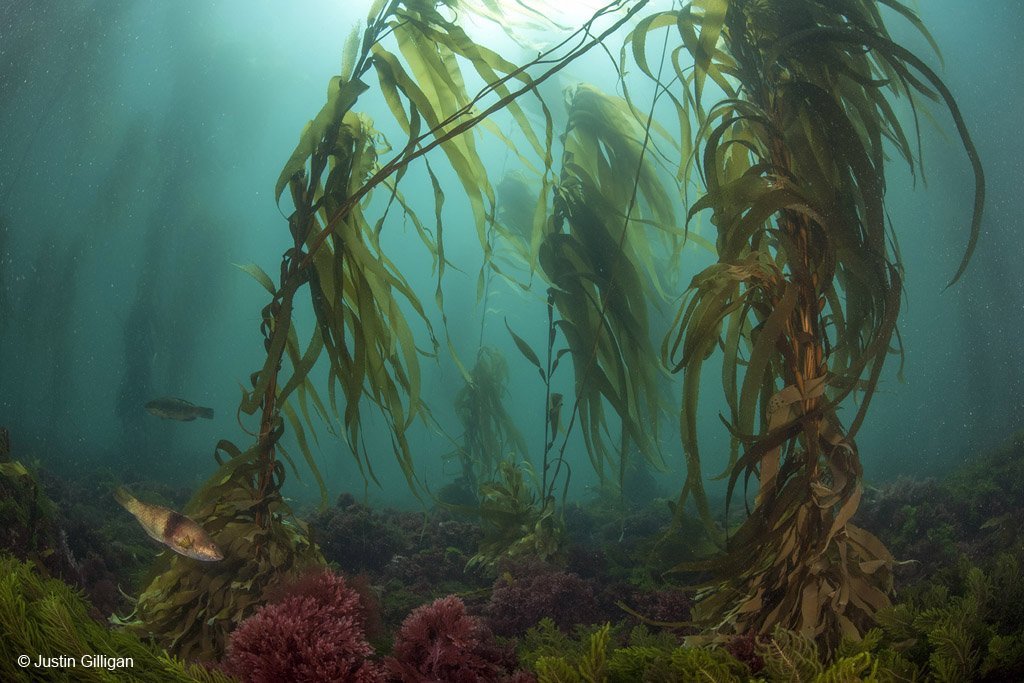
Fungus Pair
Unidentified species
Too often we burn up time, carbon and inspiration in our search for the big subject. I am proud that my last six ANZANG winning entries were taken in my garden or after a short stroll down the road. The humble scenes at our feet can be epic.
Pomona, Sunshine Coast, Queensland
Canon 5D Mk II, Canon 100 mm macro, 1/500, f/3.5, ISO 400, handheld
Photo Credit: Raoul Slater, Queensland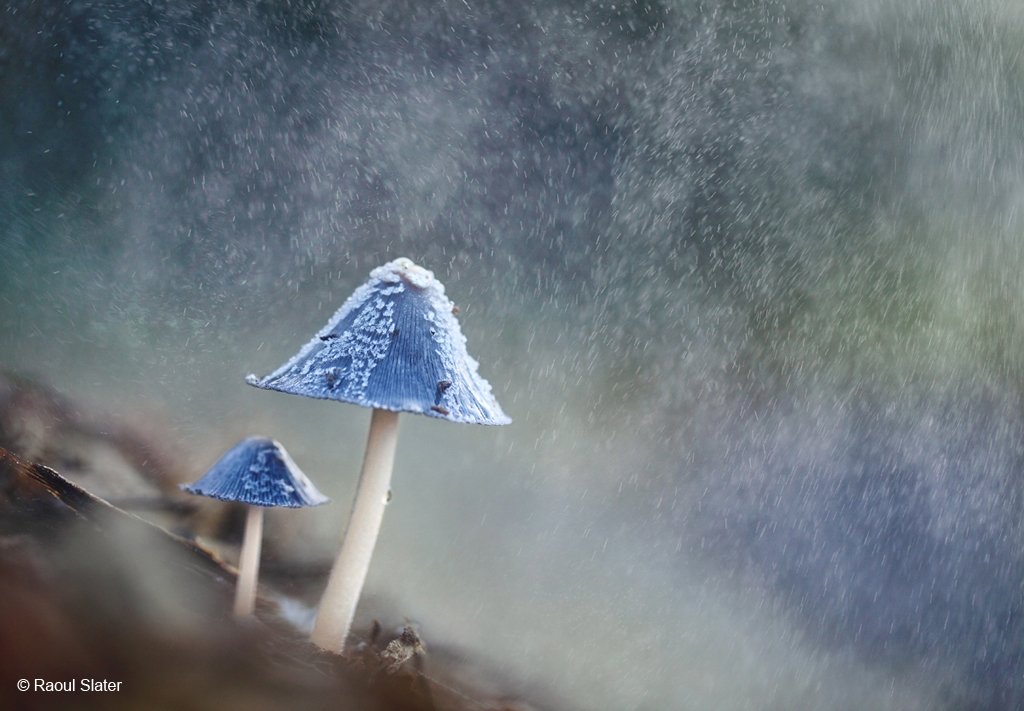
Spirit in Country
It took several attempts circling around at 3000 feet to direct my pilot into position so I could get the angle I wanted and keep the strut of the wing out of shot. To me, this looks like a person side-on laying in the earth.
Lake Eyre, South Australia
Nikon D800, Nikon 24-70 mm, 1/1600, f/8, ISO 200, handheld
Photo Credit: Julie Fletcher, South Australia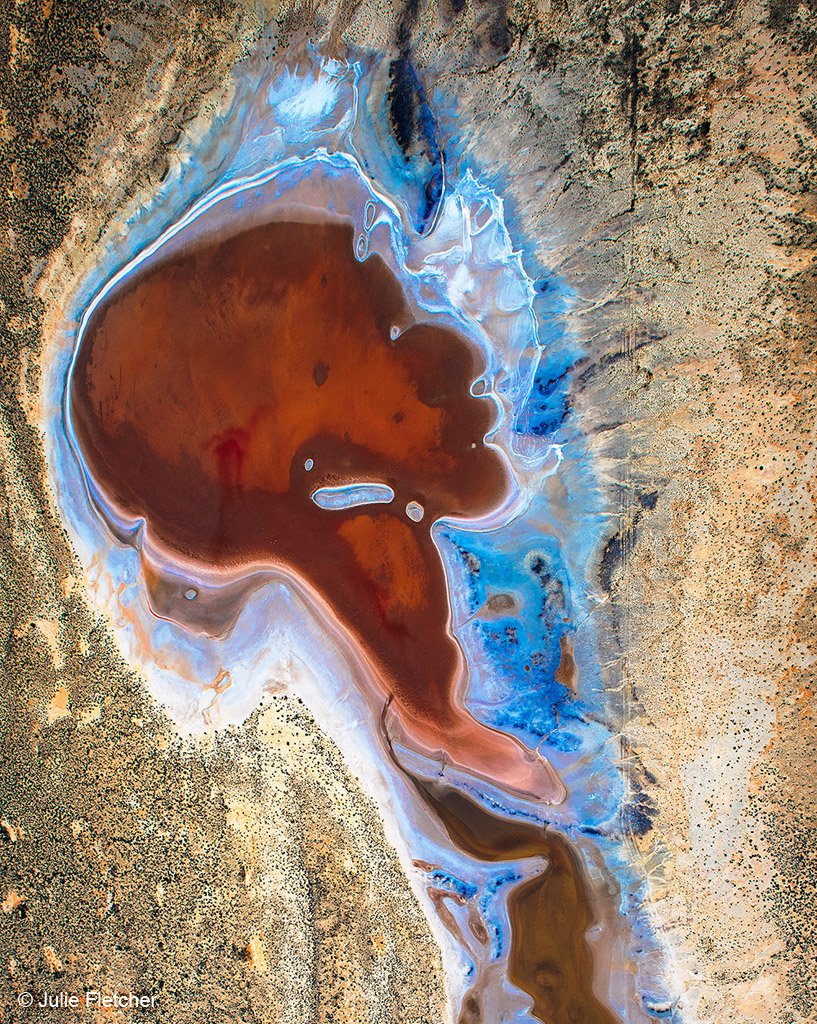
Kosciuszko Ice
Ice remaining from winter in Kosciuszko National Park forms an eerie, endless scene with the low cloud on Carruthers Peak.
Kosciuszko National Park, New South Wales
Nikon D7200, Nikon Nikkor AF-S 18-200 mm f/3.5-5.6G II, 1/200, f/8, ISO 200, handheld
Photo Credit: Ryan North, New South Wales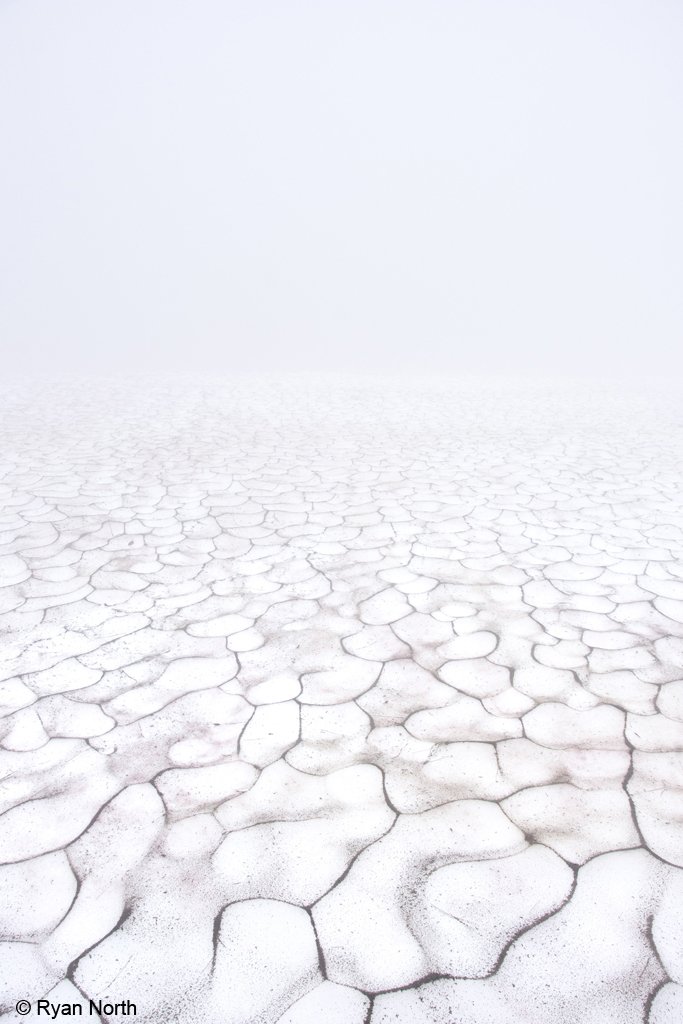
Iceberg at Paradise Harbour
The iceberg has wonderful form and texture (which is accentuated in high contrast monochrome), and some of the 90 percent that is under the water can also be seen.
Paradise Harbour, Antarctica
Canon EOS 5D Mk III, Canon 17-40 mm f4 at 20 mm, 1/640, f/11, ISO 640, circular polarising filter, handheld, monochrome conversion with Nik Silver Efex Pro 2
Photo Credit: Brian Jones, Australian Capital Territory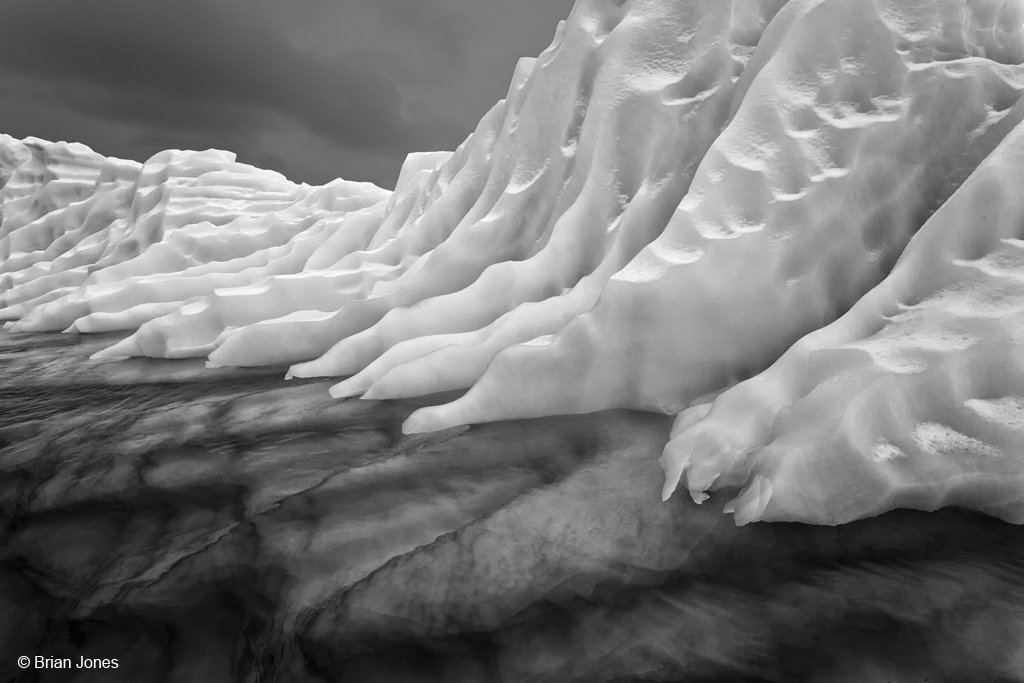
Whaleshark
Whale shark, Rhincodon typus
In remote West Papua a whale shark feeds. I positioned myself to capture the sun beams and waited for the whale shark to swim below. The whale shark is the largest living fish, listed as vulnerable and threatened by the shark-finning industry, vessel strike and as by-catch in net fishing.
Cenderawasih Bay, West Papua, Indonesia
Nikon D3S, Nikon 16 mm fisheye, 1/400, f/6.3, ISO 500, Seacam housing
Photo Credit: Tracey Jennings, Singapore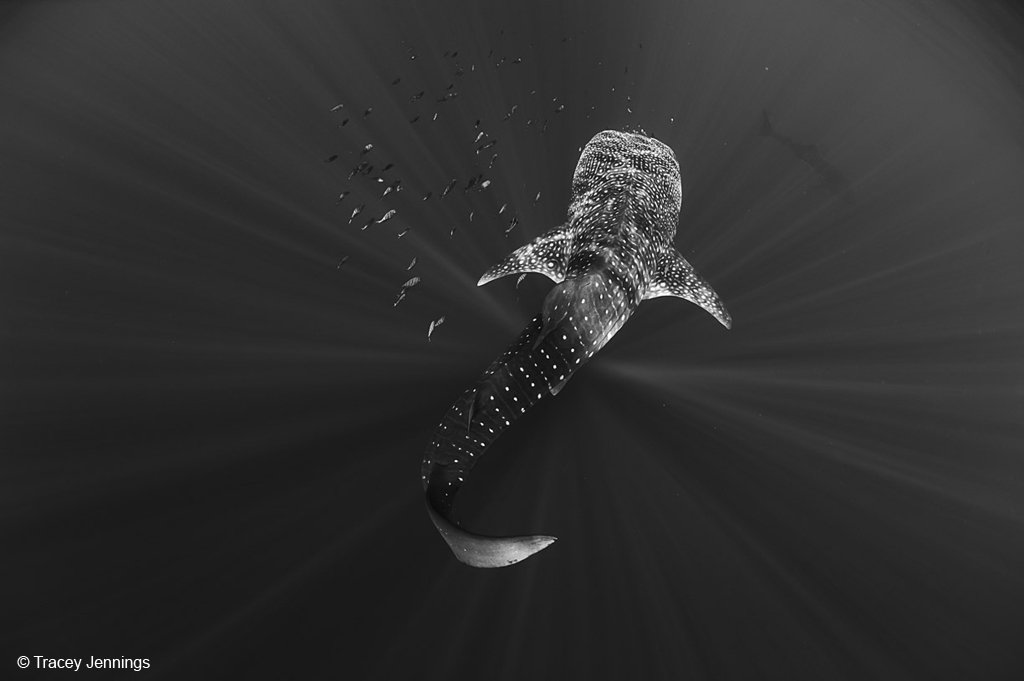
Gill Net
Marblefish, Bovichtus angustifrons; herring cale, Odax cyanomelas
In most Australian states recreational gillnets are now illegal. However, in Tasmania gill nets or graball nets – due to their non-selective nature – can still be set for six hours at a time. This marblefish and herring cale are likely to be released from this net as dead bycatch.
Tasman Peninsula, Tasmania
Nikon D810, 16-35 mm f4, 1/13, f/18, ISO 400, two Ikelite DS161 strobes, Nauticam housing
Photo Credit: Justin Gilligan, New South Wales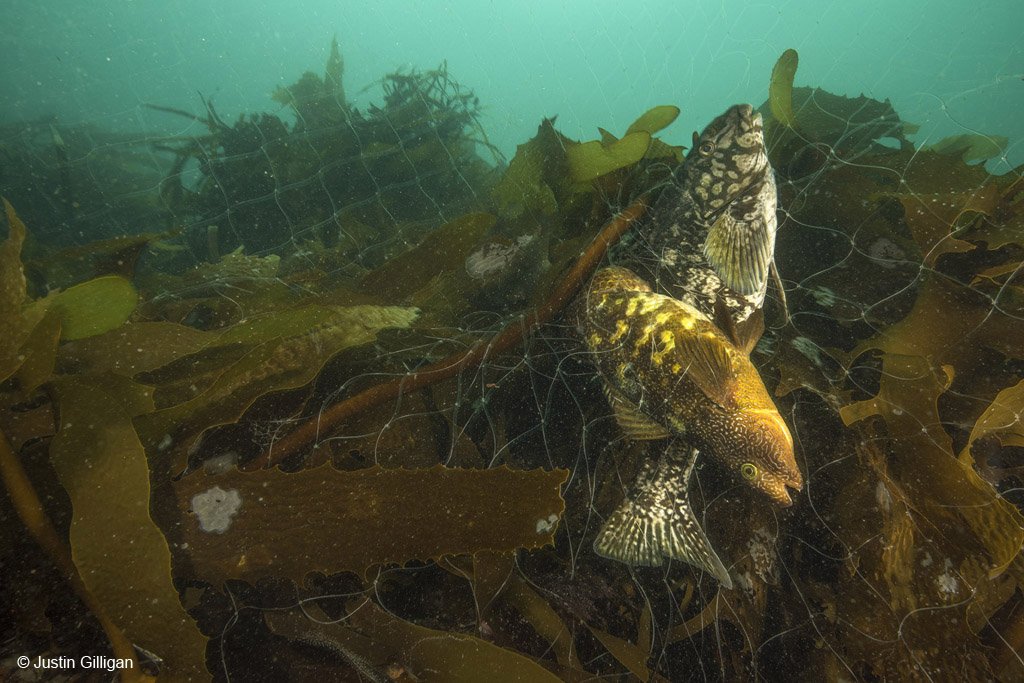
Tied
Australasian darter, Anhinga novaehollandiae
This Australasian darter’s bill was covered with fibre and junk. It couldn’t open its bill but I went back to the same location a couple of days later and noticed the bird’s bill was almost free of material.
Lake Monger, Perth, Western Australia
Canon 5D Mk III, Tamron SP 150-600 mm f/5-6.3 Di VC USD AO11 (500 mm), 1/400, f/6.3, ISO 500, handheld
Photo Credit: Lea Scaddan, Western Australia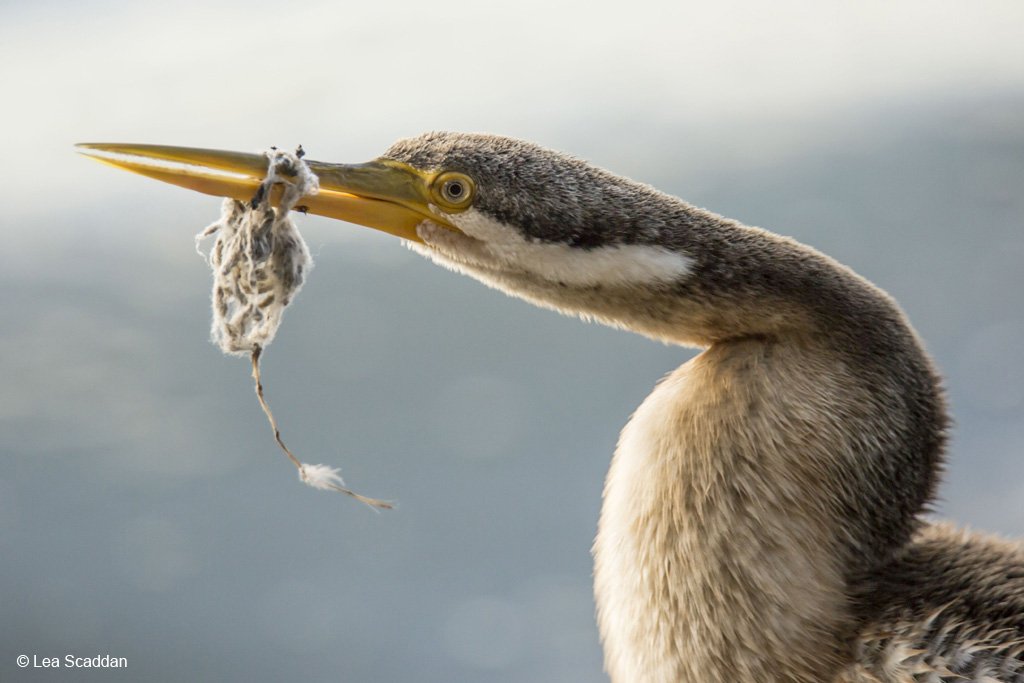
Coming In For a Drink
Grey-headed flying fox, Pteropus poliocephalus
Status: Vulnerable
These grey-headed flying foxes can be seen skimming the water in order to lick the water from their chests, mainly when it hasn’t rained for some time or in extreme temperatures. They are fascinating creatures. This photo was taken at the bat camp on the Parramatta River in Parramatta.
Parramatta River, Paramatta, New South Wales
Nikon D500, 200-500 mm, focal length 500 mm, 1/1250, f/7.1, ISO 720
Photo Credit: Elizabeth Howell, New South Wales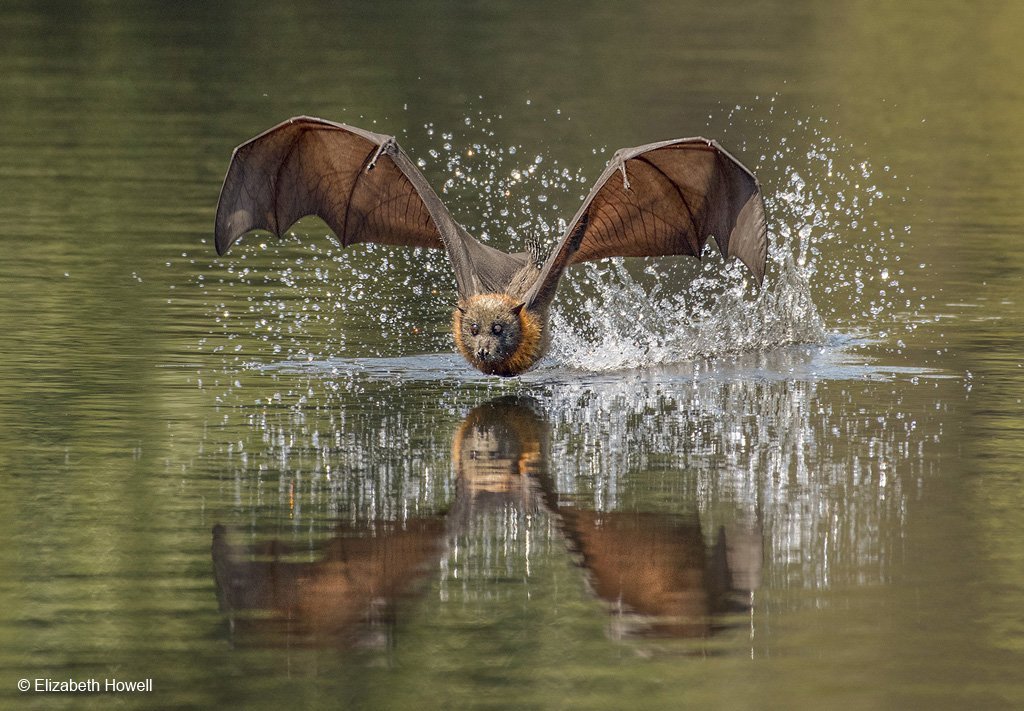
Wandering Albatross
Wandering albatross, Diomedea exulans
Status: Vulnerable
The wandering albatross’ huge wingspan is perfectly designed for catching the updraft from the ocean. Steadying myself as the boat rocked from side to side to photograph the magnificent bird in flight proved rather more difficult. Classified as vulnerable, longline fishing is believed to be a main cause of its decline.
Kaikoura, New Zealand
Canon EOS-1D Mk III, Canon EF70-300 mm f/4-5.6L IS USM, 1/2500, f/7.1, ISO 500, handheld
Photo Credit: Trevor Penfold, New Zealand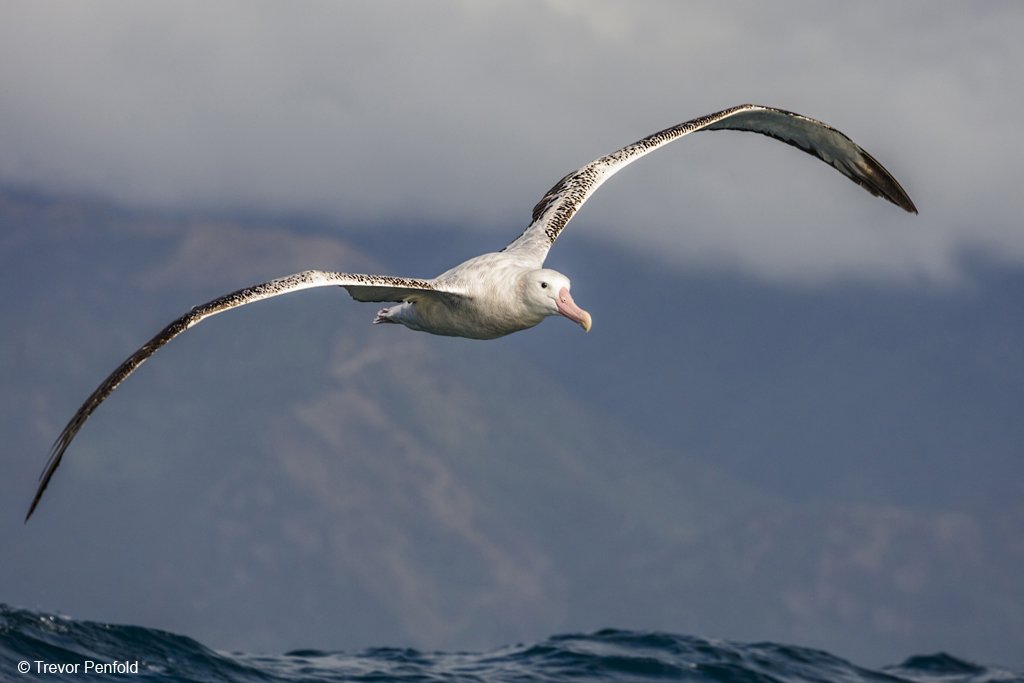
The Dancer
Common dolphin, Delphinus delphis
I was out boating in our inflatable when we encountered a pod of common dolphins. Porpoises can be a tricky subject as you never know when or where they will surface. Being patient and quick really helps!
Dalmeny, New South Wales
Canon EOS 7D, EF100-400 mm f/ 4.5-5.6L, 1/1000, f/5.6, ISO 320, handheld
Photo Credit: Georgia Poyner, New South Wales. Age 16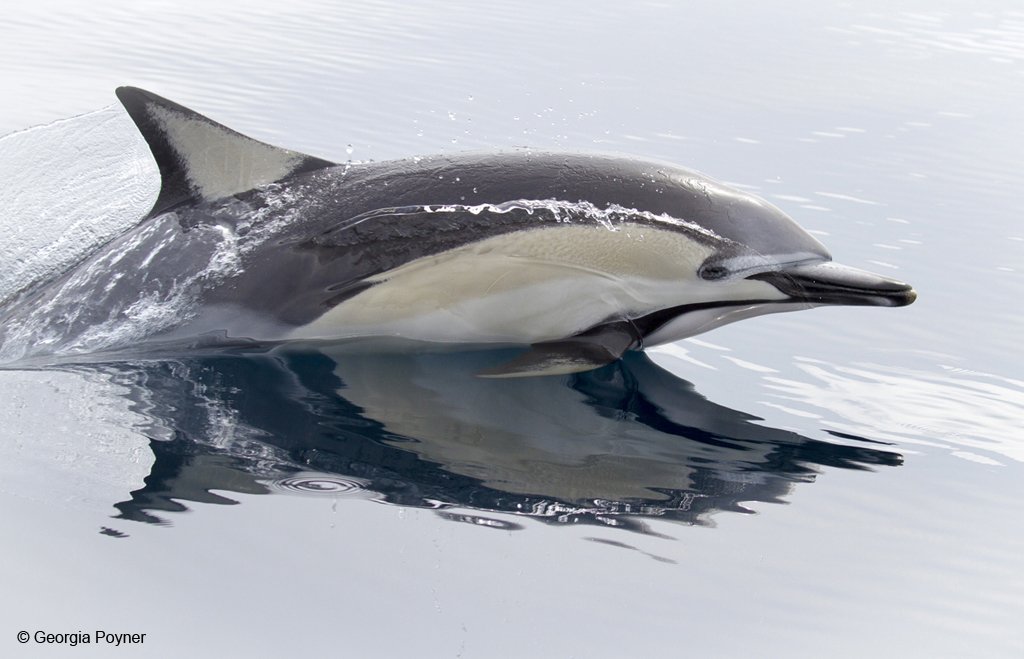
Morning Mist
Eastern grey kangaroo, Macropus giganteus
An early morning start, kayaking on Tanja Lagoon. I managed to capture this picture of an eastern grey kangaroo jumping across the lagoon through the mist. It’s not common to see them in the water. I loved the colours of the morning sunrise.
Tanja Lagoon, New South Wales
Canon Power Shot SX50 HS, 4.3-215.0 mm, 1/400, f/8, ISO 100, handheld
Photo Credit: Tess Poyner, New South Wales. Age 14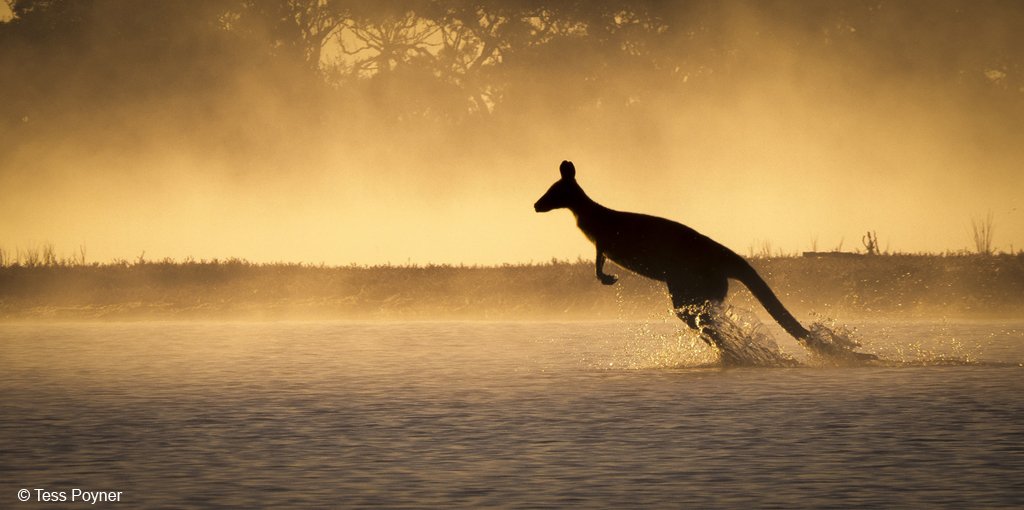
Predatory Pursuit
Spider crabs, Leptomithrax gaimardii; Maori octopus, Octopus maorum
This unusual encounter features an aggregation of spider crabs (Leptomithrax gaimardii) and a predatory Maori octopus (Octopus maorum). The octopus was behaving like an excited child in a candy store trying to work out which crab to catch and consume – its eyes were certainly bigger than its gut!
Mercury Passage, between Maria Island and mainland Tasmania
Nikon D810, 15 mm f2.8, 1/100, f/14, ISO 400, two Ikelite DS161 strobes, Nauticam housing
Photo Credit: Justin Gilligan, New South Wales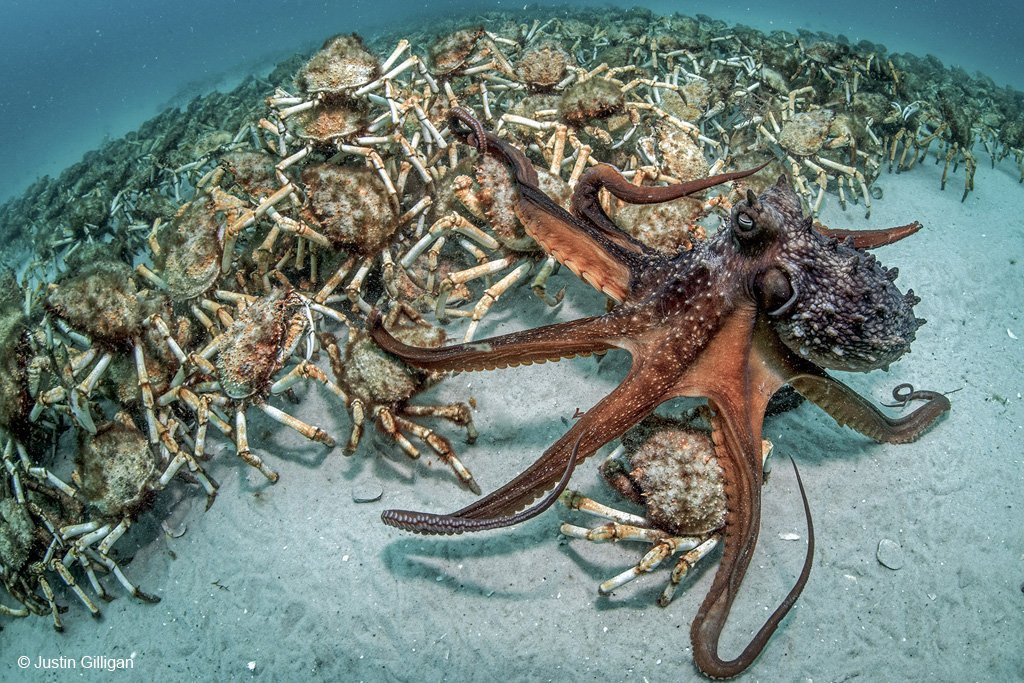
Spirit in Country
It took several attempts circling around at 3000 feet to direct my pilot into position so I could get the angle I wanted and keep the strut of the wing out of shot. To me, this looks like a person side-on laying in the earth.
Lake Eyre, South Australia
Nikon D800, Nikon 24-70 mm, 1/1600, f/8, ISO 200, handheld
Photo Credit: Julie Fletcher, South Australia
Duck Lagoon
The lagoon shrouded in fog creates an ethereal feel to the morning. There are many gum trees in this area but I chose to take a minimalistic approach and showcase a beautiful large low-hanging branch. Many bird species live in this area.
Kangaroo Island, South Australia
Nikon D800, Nikon 24-70 mm, 1/100, f/11, ISO 200, handheld
Photo Credit: Julie Fletcher, South Australia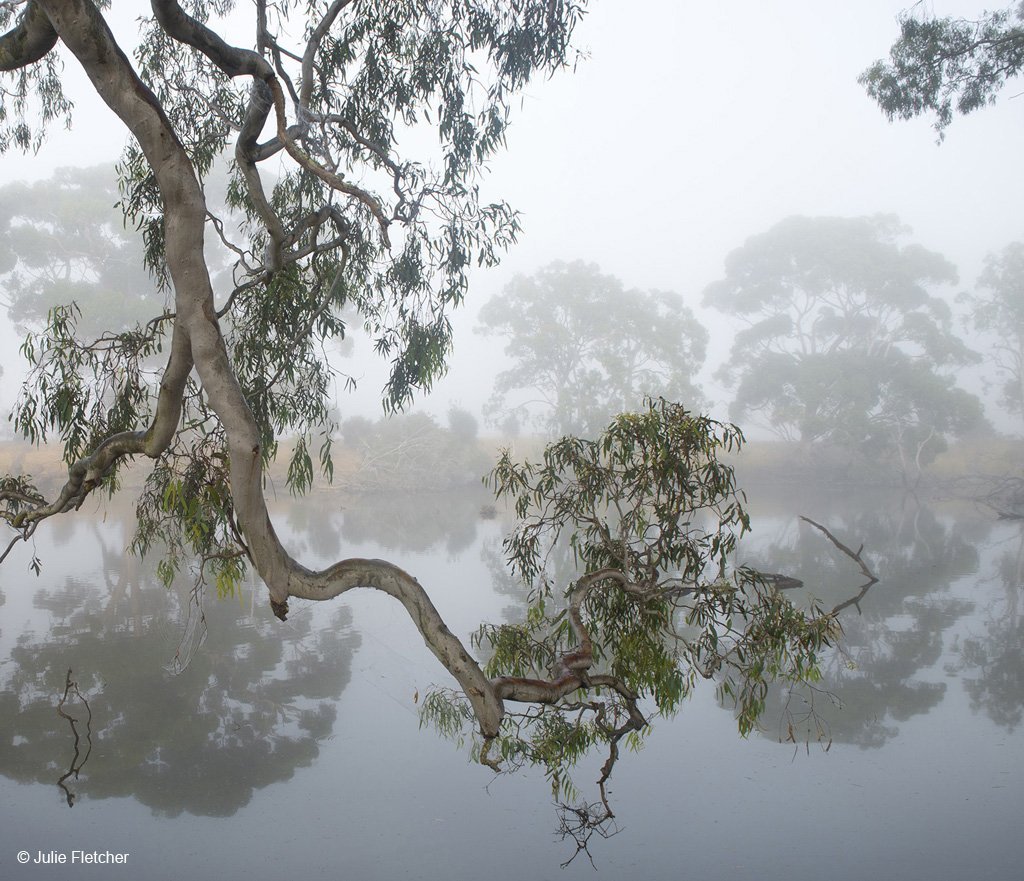
Look Up
This giant gum tree holds its own growing at the entrance of the chasm. I wanted to make this giant the hero so I took a very low point of view and creative composition getting in nice and close to the base of the tree.
Standley Chasm, Northern Territory
Nikon D800, Nikon 14-24 mm, 1/100, f/14, ISO 400, handheld
Photo Credit: Julie Fletcher, South Australia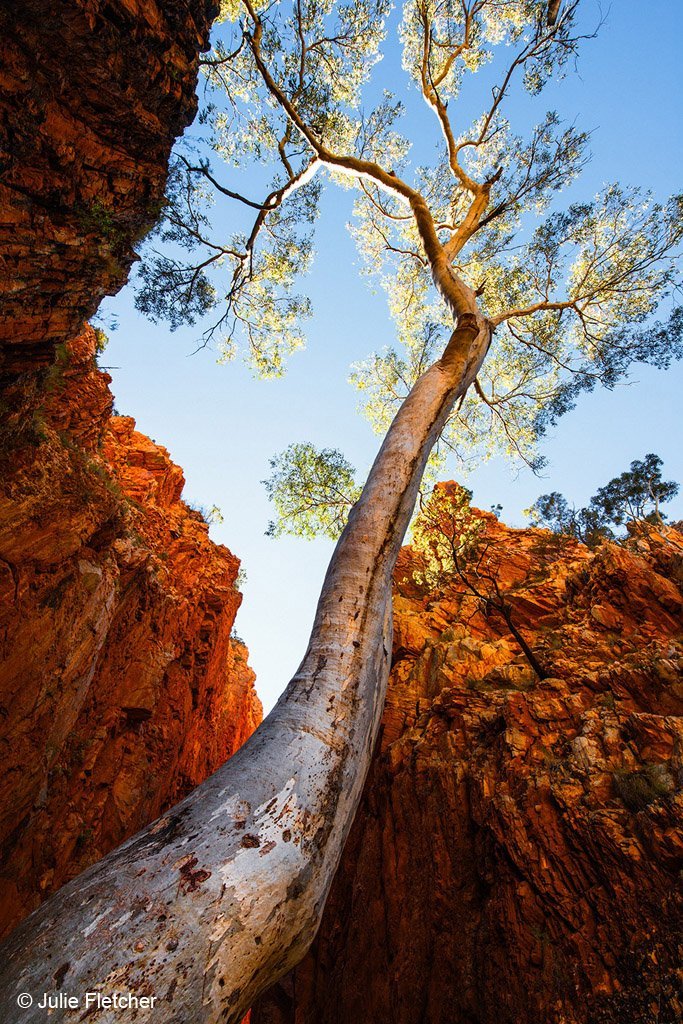
Wedgie
Wedge-tailed eagle, Aquila audax
A curious juvenile wedge-tailed eagle lets me come in rather close which allows me to capture it sitting on this old fence. I was able to move around so I could capture the bird’s talons as a feature.
Marree, South Australia
Nikon D800, Sigma 150 – 500mm, 1/2000, f/6.3, ISO 1250, handheld
Photo Credit: Julie Fletcher, South Australia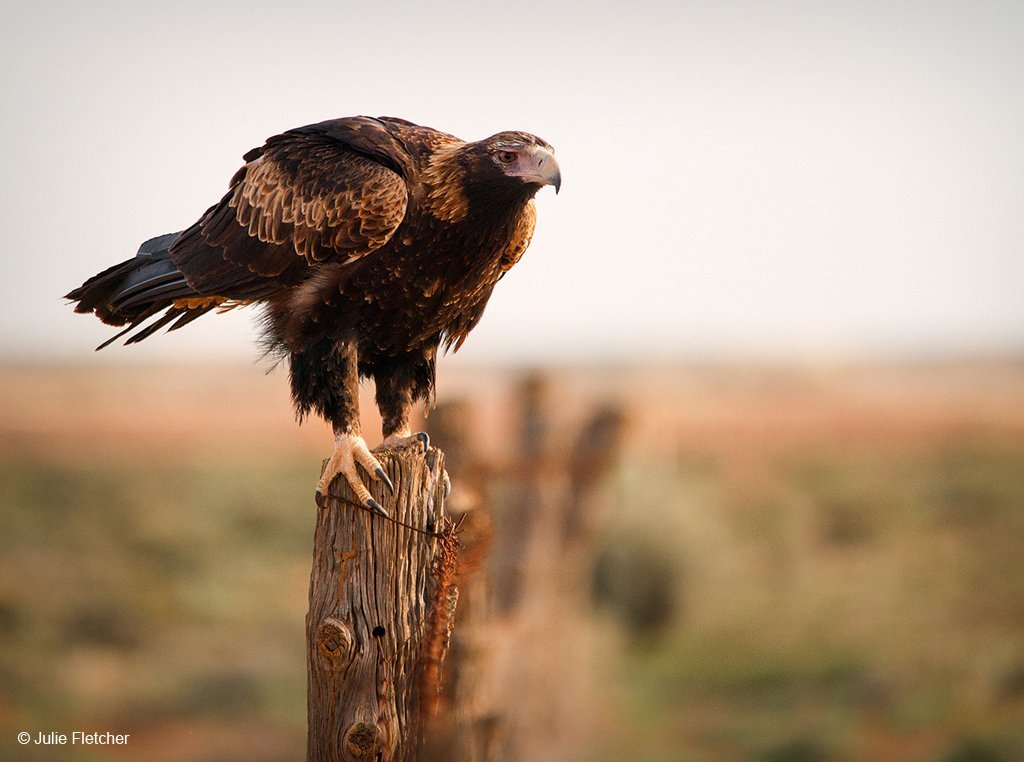
Rainbow Bee Eater
Rainbow bee eater, Merops ornatus
I just loved the light play on this branch and watched this bird flitting back and forth from the water to the tree for ages before it finally landed where I wanted it to in the perfect pool of light.
Tennant Creek, Northern Territory
Nikon D800, Sigma 150 – 500mm, 1/2000, f/6.3, ISO 400, handheld
Photo Credit: Julie Fletcher, South Australia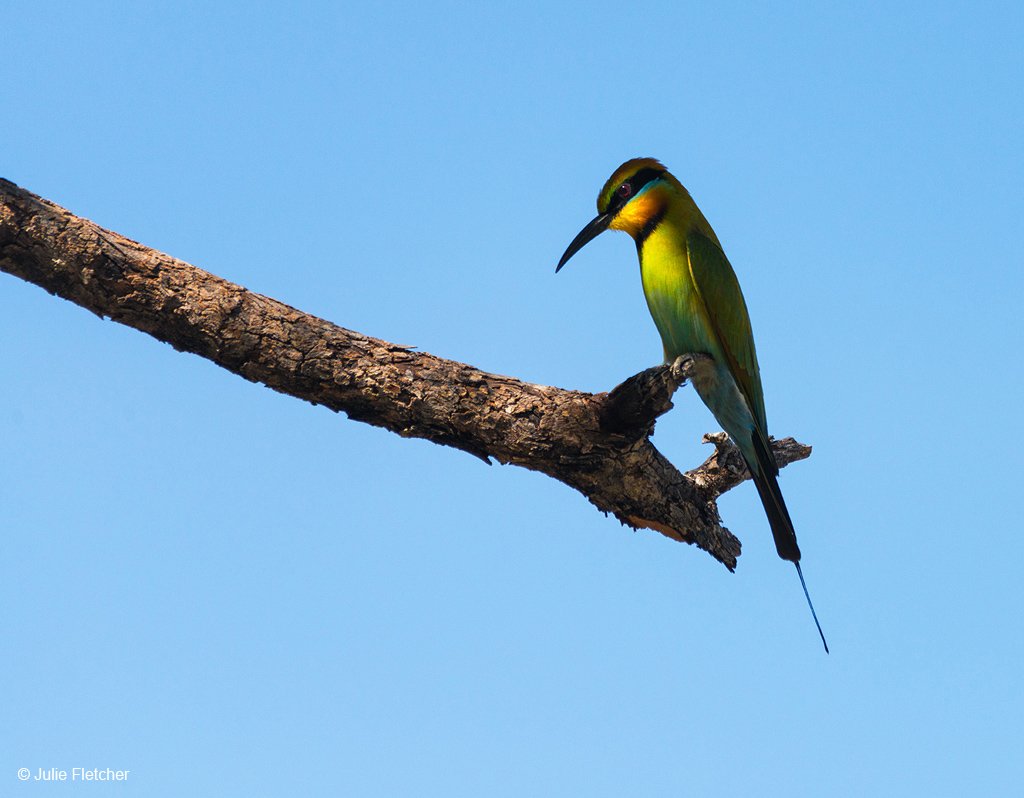
Framed
Always in search of something different, I found this coolabah tree with a large gnarly branch full of texture and life which I decided to use as the feature and a frame to the dead gum trees further out in the water. A contrast in every way.
Menindee Lakes, New South Wales
Nikon D800 , Nikon 16-35mm, 1/20, f/F16, ISO 200, tripod
Photo Credit: Julie Fletcher, South Australia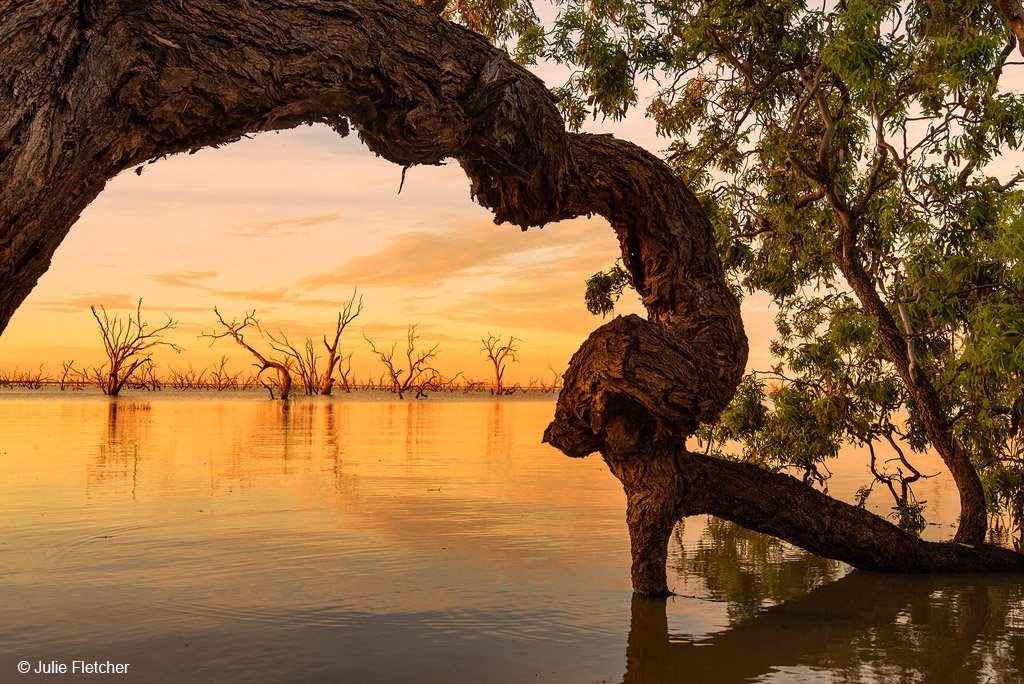
Home Topics Wildlife GALLERY: 2017 AG Nature Photographer of the Year winners

